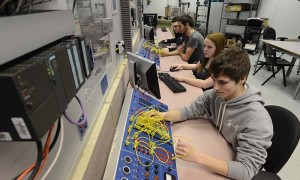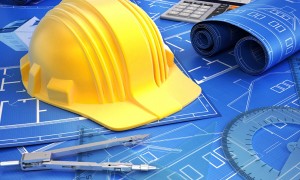The day your baby was born, his brain was already packed with almost all of the neurons (brain cells) he would need for life. More than 100 billion – 3 times as many stars as there are in the milky way. Even though the neurons of the brain already exist at birth, those that control higher order thinking, language and abstract thought as well as emotional regulation, can’t grow and develop till they are actually put into use. Neurons are activated through stimulation from the environment after birth. So, no matter how much Mozart you consumed during your pregnancy, your baby will recognise your voice, and little else when he is born. But then the fun begins.
Once out of the murky, calm womb up to 2 million synapses per second fire through your baby’s mental circuits, in response to their young brain’s experiences. A synapse is a connection between two brain cells. The more often a connection is used, the more stable it becomes. These connections eventually form memories, which is how we all learn.
“The growth in each region of the brain depends on receiving stimulation in that particular area.” – Child Welfare Information Gateway
The number of connections between neurons also determines the brain’s physical growth and intelligence. Bigger brains have better circuity. This allows more messages to travel faster between different parts of the brain1. For example, continuously talking to babies will repeatedly fire language neurons and create connections that lead to the formation of memories and physical growth in that area. These language memories form a very important foundation for higher order learning. Growth in brain volume after infancy may not compensate for poorer earlier growth.2 The first three years are the most important for the development of intelligence. How then can we encourage stronger, faster connections between neurons in our baby’s brain?
If you want to give your baby the best cognitive start in life, your mission is fairly straightforward: to help your child build up sufficient networks of good strong synapses in the areas of her brain that support memory and language. These, in turn will open up the learning pathways to support higher cognitive functions.
Here are some tips to help your chubby-cheeked cherub develop to his or her full potential.
Language Development
Your child’s first year is all about sounds. Talk, talk, talk to your child, face to face. Your child will hear sounds from the TV and from around him, but he needs to see your mouth moving and the body language that goes with the sound in order to catalogue words correctly. Your child is most engaged when you are close enough to make eye contact (remember your baby is short-sighted for the first few months). Keep sentences short and repeat important ideas.
Try this:
What’s in the box? Everyday, around the same time, introduce your baby to 2 new objects that you pick out of a box. Hold it up and ask “What is this?” Then let your child explore it, either let them grasp it or turn it around slowly so that they can see all of it. Describe it as you go. When he’s had a good look tell him what it is and show him how it’s used. No special equipment required.
In your baby’s second year the brain’s language centres evolve dramatically as synaptic activity increases. Vocabulary expands exponentially, but only if they are exposed to many words and things to name. Eventually, pull objects out of the box, ask what it is and let your baby tell you. Then give them cuddles for being so smart.
Independence
Scaffolding. Is your little girl reaching for a toy that is just outside of her reach? Your first instinct is to pick it up and give it to her, right? Think again. This is both a behavioural and cognitive learning opportunity. Scaffolding happens when you follow your child’s lead in activities that they initiate. You provide just enough support to challenge her to the next level without overwhelming her with frustration. So nudge the toy to just within her reach. She still has to try to get what she wants. She is learning that she can help herself, that this requires effort and that mommy won’t just hand her whatever she wants when she wants it.
Stranger Anxiety And Going To New Places
At around 8 months old, your baby’s conscious memory stabilises. He begins to understand that objects can exist even when he can’t see them because now he can remember them. Your baby can look at a partially hidden toy and know what it is because they have a complete picture of it stored in memory. This is when stranger anxiety can begin because a stranger is someone that they don’t already have a mental image of. Going to visit granny and Grandpa for the summer? Even if your child has seen them before a few months ago, she will have forgotten them by now. So show her lots of pictures of granny and grandpa being sure to name them as you do. Skype often so that, when they finally meet up, there is familiarity rather than fear.
Starting Kindergarden Soon?
Again, build up memories of the kindergarten so that it isn’t so frightening the first time you leave your infant or toddler there with complete strangers and lots of different things and noises. Look at the school’s website, explain the different pictures they have on it. Walk past the school and point out the different things in the playground.










